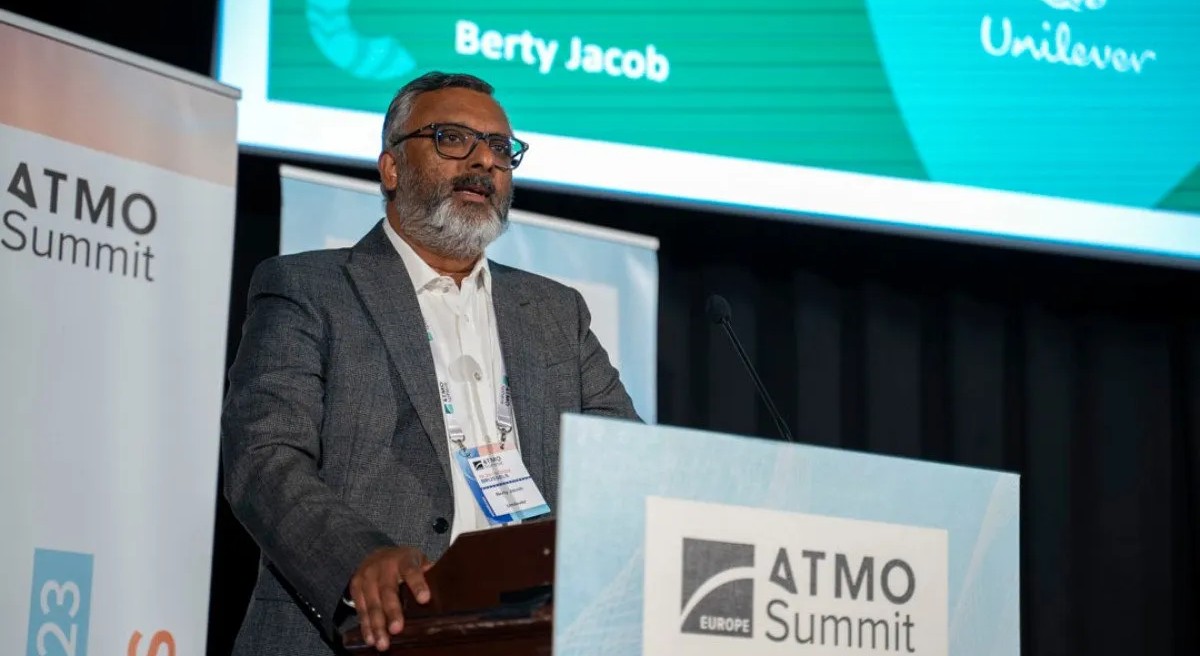Unilever sees 12‒17% energy reduction with variable speed compressors in R290 cabinets
October 19, 2023

With three million plug-in ice cream cabinets worldwide, U.K.-based Unilever has seen a 12‒17% energy reduction using variable speed compressors in its propane (R290) cabinets over the comparative use of static fixed speed units.
The various measures taken by the company to reduce the carbon footprint associated with its ice cream cabinets were presented by Berty Jacob, Senior Research and Design Manager at Unilever, at the ATMOsphere (ATMO) Europe Summit 2023, held September 19–20 in Brussels. The event was organized by ATMOsphere, publisher of Hydrocarbons21.com.
Ice cream requires a cold chain, making it a relatively high-carbon food. Jacob noted that Unilever’s ice cream cabinets account for 10% of its value chain greenhouse gas emissions.
He indicated that the company was one of the first to use natural refrigerant cabinets, testing the first hydrocarbon units in 1994 and commercially rolling them out in 2004.
According to an article on Unilever’s website, all of the company’s freezers have run on natural refrigerants since 2008, making the “fleet of freezers 30% more efficient.”
After the R290 cabinet rollout, “we then started working on increasing efficiency through components like compressors, fan motors, insulation, glass lids and more,” Jacob said.
Jacob reported that by collaborating with cabinet manufacturers and compressor manufacturers like Italian Embraco, Unilever “geared up its technology” and evaluated potential energy savings using variable-speed compressors. “Cabinets with a variable speed compressor show an energy reduction somewhere between 12 and 17% over comparative use of a static fixed speed compressor.”
“We are confident that the use of variable speed compressors will not only enable us to meet the new European energy labeling guidelines, which include strict efficiency indexes and energy classes, but it will allow us to stretch our energy targets further,” said Jacob.
“We are immediately moving forward installing variable speed compressors on our flagship models,” he added, noting that the new compressors slightly increase cabinet cost, but that is made up by its energy efficiency.
Unilever also helps reduce its cabinet carbon footprint by “deploying smartly,” getting the right cabinet in the right channel for retailers and operators and providing a 12-step energy–efficiency guideline document and video to sales personnel. “Small steps that make a big impact,” Jacob said.
Warming the cold chain
The company seeks further possible energy savings by “thinking outside the box,” Jacob said. Its three core activities include increasing cabinet energy efficiency to use less energy, warming cabinets to use less energy and switching to renewable energy.
“An interesting idea we have researched is revising the target load temperature from the current -18°C [-0.4°F] ice cream standard to -12°C [10.4°F].”
Maintaining ice cream quality at -12°C requires “tweaks” to its formulation, including the types and amounts of sweeteners and stabilizers used to give the product the same consumer properties and characteristics that it has at -18°C. Jacob reports that in blind taste tests conducted by the company, consumers cannot tell the difference.
“We have been testing this idea in the lab and the field, measuring energy savings between 20‒25% for the higher temperature formulation,” Jacob said. “However, it will depend on the industry being willing to walk with us for this to be the next ice cream cold chain energy-savings tip,” he added.
Jacob reports that Unilever has started conversations concerning this topic with its trade associates. In addition, the company is planning a rollout of -12°C ice cream in Asia and other markets.
According to Jacob, increasing the storage point by 6°C (10.4°F) is good for the planet, reducing GHG emissions by 20‒30%. Other benefits include reduced operating costs for retail operators, with the 20‒25% energy savings, and increased sales from delivering better quality ice cream, especially in countries with poor cold chains.
“We have also started to explore the use of renewable energy, with the first solar-powered [ice cream] push carts,” Jacob said, indicating a big market in Asia and India for these units.
Given ice cream is a seasonal impulse purchase, it has to be there for a person to buy it. Unilever seeks to ensure that concessions and distributors can plan for and increase their product availability by equipping cabinets with camera systems, Jacob indicated. “Cameras take pictures of the merchandise [and] upload it to the cloud where artificial intelligence analyzes inventory to generate orders.”
Established over 100 years ago, Unilever reports on its website that it has reduced its GHG emissions by 68% since 2015 from energy and refrigerant use.
“I hope our journey showcases the power of setting ambitious goals, embracing innovation and fostering a culture of environmental stewardship that inspires you to take action and contribute to a more sustainable, energy-efficient future,” Jacob said.


